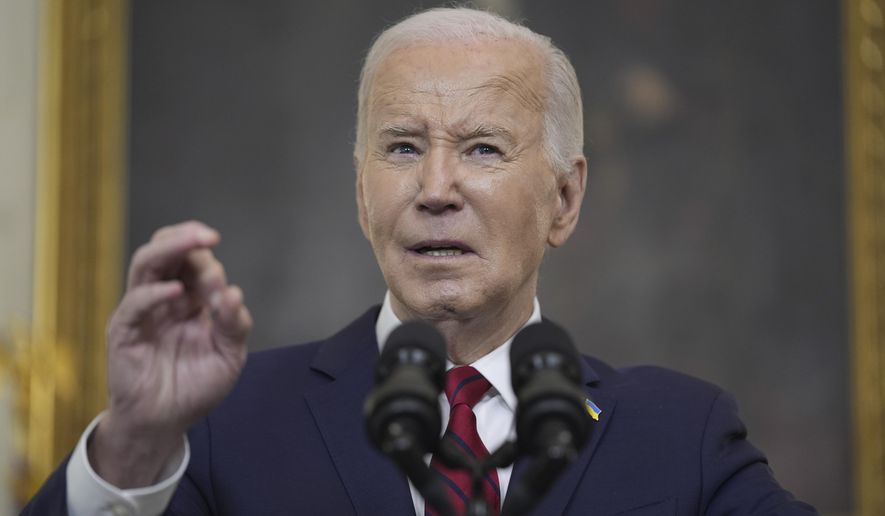Congress passed President Biden‘s $95 billion foreign aid package thanks, in part, to making some of the Ukraine aid a loan though the prospects for getting repaid aren’t good.
Most of the $61 billion in the package for Ukraine will be spent in the U.S. for weapons to send into the war zone. About $9 billion is going directly to Kyiv and that’s what was carved out as a loan.
The law also allows for the president, with congressional review, to entirely nix the $9 billion debt by 2026.
The $61 billion is on top of the roughly $75 billion in aid the U.S. has given Ukraine since the Russian invasion in February 2022.
President Biden will likely cancel half of the $9 billion loan when he has the opportunity later this year, said Rep. Andrew S. Clyde, Georgia Republican, who pointed to the precedent Mr. Biden set in canceling billions of dollars in student loan debt.
“The ‘forgivable loan’ in the Ukraine aid bill is all smoke and mirrors,” Mr. Clyde said. “It was designed to be ‘canceled,’ meaning the president can simply transfer more debt onto the backs of hardworking Americans,” he told The Washington Times.
Still, adding in the loan concept — an idea promoted by former President Donald Trump — helped win support from nearly a dozen Senate Republicans who previously voted against the package in February.
There are two deadlines for canceling the debt. The first is on Nov. 15, after the election, when Mr. Biden can cancel up to half of the loan. The second deadline is on Jan. 1, 2026, when whoever is president can cancel the remaining debt.
Doug Rediker, a foreign policy and global economy expert from Brookings, said the U.S. would have been better off making the aid a grant.
He said that loaning the Ukrainian government money was a high-risk decision with little chance that the country would pay the $9 billion back, partially or completely. The loan could also raise alarm bells for other creditor countries and institutions who have loaned Ukraine money since the beginning of the war, and make the odds of repayment even lower.
“In many ways, this was a really bad structure, even if it was politically the only way to get it done,” Mr. Rediker said.
The U.S. has a mixed record of collecting debts from foreign countries. The Lend-Lease Act during World War II provided $50 billion worth of war supplies to the Allies to combat the Germans.
Most of that aid went to the U.K., but a solid chunk went to Russia. Britain made its final repayment to the U.S. in 2006. Much of the loan to Russia was never paid back.
“I have to assume that Biden, if he were president [in 2026], would forgive the loan, and with Trump, you never know,” Mr. Rediker said.
• Alex Miller can be reached at amiller@washingtontimes.com.




Please read our comment policy before commenting.